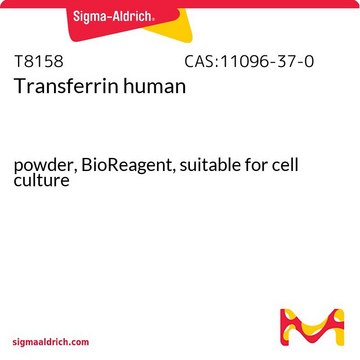P3782
L-αfosfatidilcolina
solution, from soybean, suitable for cell culture, Type III-S
Sinônimo(s):
1,2-Diacil-sn-glicero-3-fosfocolina, 3-sn-fosfatidilcolina, L-αlecitina, Azolectina, PC
About This Item
Produtos recomendados
fonte biológica
soybean
Nível de qualidade
tipo
Type III-S (III is the third type of Phosphatidylcholines produced; S is for Soybean.)
Ensaio
≥98%
Formulário
solution
concentração
100 mg/mL in chloroform
técnica(s)
cell culture | mammalian: suitable
temperatura de armazenamento
−20°C
InChI
1S/C42H80NO8P/c1-6-8-10-12-14-16-18-20-21-23-25-27-29-31-33-35-42(45)51-40(39-50-52(46,47)49-37-36-43(3,4)5)38-48-41(44)34-32-30-28-26-24-22-19-17-15-13-11-9-7-2/h14,16,20-21,40H,6-13,15,17-19,22-39H2,1-5H3/b16-14-,21-20-/t40-/m1/s1
chave InChI
JLPULHDHAOZNQI-ZTIMHPMXSA-N
Procurando produtos similares? Visita Guia de comparação de produtos
Descrição geral
Aplicação
Ações bioquímicas/fisiológicas
Nota de preparo
Prepared by a modification of the procedure of Singleton, W.S., et al., J. Am. Oil Chem. Soc., 42, 53 (1965).
Palavra indicadora
Danger
Frases de perigo
Declarações de precaução
Classificações de perigo
Acute Tox. 3 Inhalation - Acute Tox. 4 Oral - Carc. 2 - Eye Irrit. 2 - Repr. 2 - Skin Irrit. 2 - STOT RE 1 Oral - STOT SE 3
Órgãos-alvo
Central nervous system, Liver,Kidney
Código de classe de armazenamento
6.1D - Non-combustible acute toxic Cat.3 / toxic hazardous materials or hazardous materials causing chronic effects
Classe de risco de água (WGK)
WGK 3
Ponto de fulgor (°F)
Not applicable
Ponto de fulgor (°C)
Not applicable
Equipamento de proteção individual
Eyeshields, Faceshields, Gloves, type ABEK (EN14387) respirator filter
Escolha uma das versões mais recentes:
Já possui este produto?
Encontre a documentação dos produtos que você adquiriu recentemente na biblioteca de documentos.
Os clientes também visualizaram
Nossa equipe de cientistas tem experiência em todas as áreas de pesquisa, incluindo Life Sciences, ciência de materiais, síntese química, cromatografia, química analítica e muitas outras.
Entre em contato com a assistência técnica







